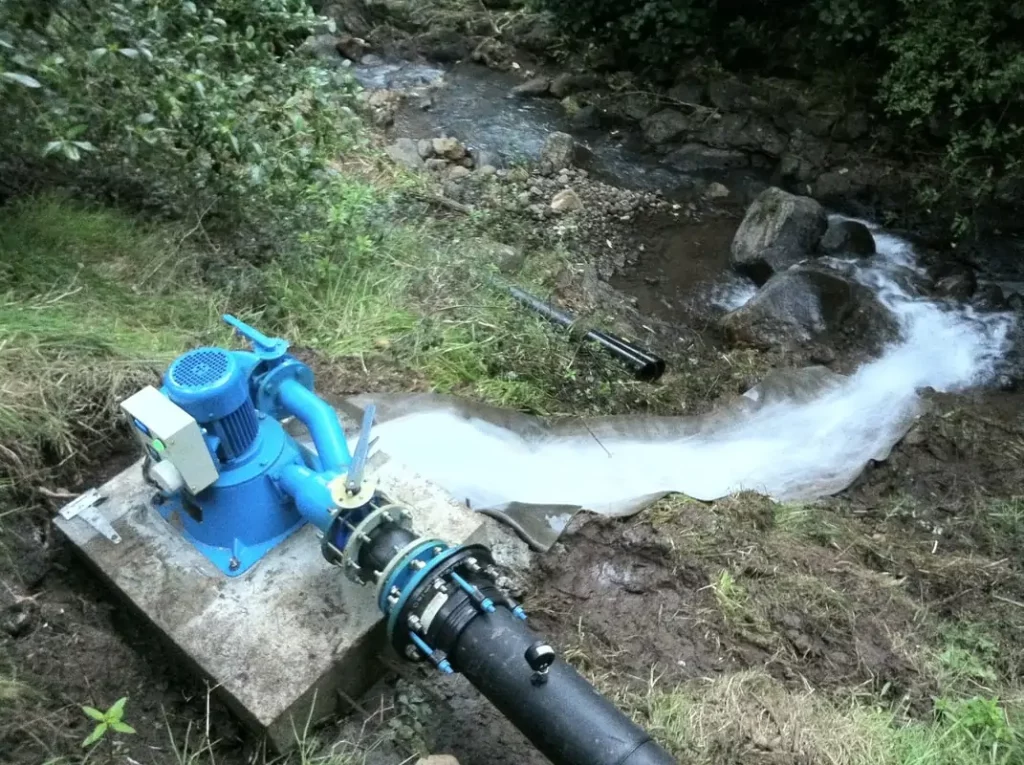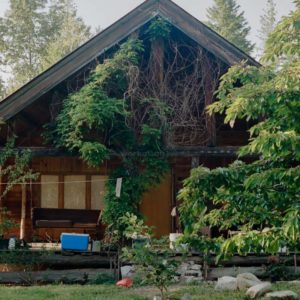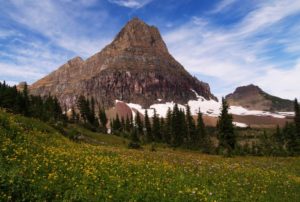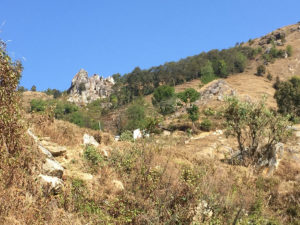Hydroelectric power offers an incredible opportunity for individuals and communities seeking independence from traditional grid systems.
This clean, renewable energy source harnesses the power of flowing water to generate electricity, providing a reliable and sustainable solution for those looking to break free from the confines of centralized power structures.
With advancements in technology and increasing accessibility to hydroelectric equipment, it’s now easier than ever before to embrace this eco-friendly option and take control of your energy future.
Get ready to explore the world of hydroelectric power and unlock the potential for off-grid independence!
Choose the right location
Hydroelectric power plants require a reliable water source, so it’s essential to choose a location with a consistent water supply. Look for a location with a stream, river, or pond that has a steady flow of water.
The plant requires a consistent flow of water to generate electricity, so it is essential to select a location with a steady and plentiful water supply.
Look for areas with a stream, river, or pond that has a consistent flow of water throughout the year.
This will ensure that your hydroelectric power plant can operate at maximum efficiency and provide a steady source of renewable energy.
Consider the elevation difference between the water source and the turbines, as this will affect the amount of energy that can be generated.
By choosing a location with a reliable water source, you can ensure that your hydroelectric power plant will run smoothly and efficiently, providing a sustainable source of energy for years to come.
Determine the water flow rate
Measure the water flow rate to determine the power potential of the site. This will help you determine the size of the turbine and generator you’ll need.
To accurately assess the power potential of a micro hydroelectric site, measuring the water flow rate is a important step.
The flow rate determines the amount of energy that can be generated by the system, and it plays a critical role in selecting the appropriate size of the turbine and generator.
By measuring the flow rate, you can determine the site’s hydraulic head, which is the vertical distance between the water source and the turbine, multiplied by the flow rate.
This value represents the total pressure drop across the system and directly affects the amount of power that can be produced.
To measure the flow rate, you can use a flow meter or a current meter.
Flow meters are inserted into the water stream and measure the volume of water flowing past a certain point in a given time.
Current meters, on the other hand, measure the speed of the water current and can be used to calculate the flow rate.
Accurate measurement of the flow rate is essential to ensure that the turbine and generator are properly sized for the site’s power potential.
If the turbine is too small, it may not be able to produce enough power to meet the site’s needs, while a generator that is too large may result in excessive wear and tear and increased maintenance costs.
By accurately measuring the flow rate, you can select the optimal size of turbine and generator for your micro hydroelectric system, ensuring maximum efficiency and minimal maintenance requirements.
Choose the right turbine
Select a turbine that’s suitable for the water flow rate and head (the difference in elevation between the water source and the point of use). There are different types of turbines, such as impulse turbines and reaction turbines, so choose one that fits your site’s specific needs.
Selecting the right turbine for your hydroelectric power generation project is important for optimal performance and efficiency.
The first step is to determine the water flow rate and head, which refers to the difference in elevation between the water source and the point of use.
Based on these parameters, you can select a turbine that is suitable for your site’s specific needs.
There are two main types of turbines to choose from: impulse turbines and reaction turbines.
Impulse turbines are better suited for high-head applications, where the water source is at a higher elevation than the point of use.
These turbines use the kinetic energy of the water to generate power, and are typically more efficient at higher heads.
On the other hand, reaction turbines are better suited for low-head applications, where the water source is at a lower elevation than the point of use.
These turbines use the pressure of the water to generate power, and are typically more efficient at lower heads.
When choosing a turbine, it’s important to consider other factors such as the available space, the water flow rate, and the desired level of power generation.
For example, if you have a limited amount of space, you may want to consider a smaller reaction turbine that can still generate a significant amount of power.
If you have a high water flow rate, you may want to consider an impulse turbine that can handle the increased flow rate and generate more power.
Selecting the right turbine for your hydroelectric power generation project requires careful consideration of the water flow rate and head, as well as other factors such as space constraints and desired power output.
By choosing a turbine that fits your site’s specific needs, you can ensure optimal performance and efficiency for your project.
Install the turbine and generator
Install the turbine and generator in the water flow stream. Make sure the turbine is submerged in the water to maximize its efficiency. Connect the generator to the turbine and ensure it’s properly aligned with the power grid.
To install a hydroelectric turbine and generator in a water flow stream, you’ll need to follow a series of steps to ensure proper installation and maximize efficiency.
First, select a location in the water flow stream where the turbine can be submerged to harness the kinetic energy of the water.
Carefully lower the turbine into the stream, making sure it’s properly aligned with the water flow.
Next, connect the generator to the turbine, ensuring that it’s securely fastened and properly aligned with the power grid.
It’s essential to position the generator so that it can efficiently convert the mechanical energy of the turbine into electrical energy.
Test the system to ensure that it’s functioning properly and producing the expected amount of electricity.
Build a water intake system
Build a water intake system that draws water from the source and delivers it to the turbine. This system should be designed to minimize the risk of debris or other obstructions entering the turbine.
To build a reliable and efficient water intake system that minimizes the risk of debris or other obstructions entering the turbine, it is important to carefully consider several key factors.
First, the intake system should be designed to draw water from a source that is free from debris and other obstructions.
This may involve selecting a water source that is located in a protected area or using a pre-screening system to remove any debris or obstructions before they enter the intake.
Second, the intake system should be designed to ensure that water flows smoothly and consistently into the turbine.
This may involve using a series of baffles or deflectors to guide the water into the turbine and prevent any debris or obstructions from entering.
The intake system should be constructed from durable materials that can withstand the forces of the water flow and the surrounding environment.
This may involve using materials such as stainless steel or fiberglass to construct the intake system and ensure that it is able to withstand the rigors of continuous use.
By carefully considering these factors, a water intake system can be built that effectively draws water from the source and delivers it to the turbine while minimizing the risk of debris or other obstructions entering the turbine.
Construct a penstock
The penstock is the pipe that carries the water from the intake system to the turbine. Build the penstock from durable materials that can withstand the pressure and flow rate of the water.
The penstock is a critical component in a hydroelectric power plant, as it is responsible for carrying the water from the intake system to the turbine.
To ensure efficient and reliable operation of the plant, it is essential to build the penstock from durable materials that can withstand the pressure and flow rate of the water.
One common material used for penstocks is steel, specifically high-strength steel that can resist the immense pressure and force of the rushing water.
The steel should be well-coated with a protective layer to prevent corrosion, and it should be reinforced with fibers such as carbon or glass to add further strength.
The penstock should be designed with a flared end to absorb the kinetic energy of the water and prevent it from focusing on a single point, which could cause damage or wear.
Furthermore, the penstock should be well-insulated to prevent heat loss and maintain the optimal temperature of the water.
This is important for the efficient operation of the turbine, as the temperature of the water affects its density and, consequently, its power output.
Proper insulation can also help to reduce noise and vibrations that can interfere with the plant’s operation.
The penstock should be built from high-strength steel, reinforced with fibers, and well-insulated to prevent heat loss and reduce noise and vibrations.
Build a powerhouse
The powerhouse houses the turbine and generator, as well as any other equipment, such as transformers and circuit breakers. Build the powerhouse to protect the equipment from the elements and ensure easy access for maintenance.
When constructing a powerhouse to house your turbine and generator, as well as other essential equipment such as transformers and circuit breakers, it is important to prioritize protection from the elements and easy access for maintenance.
The powerhouse should be built with durable materials, such as steel or concrete, to withstand harsh weather conditions and ensure the longevity of the equipment.
The powerhouse should be designed with ample ventilation and lighting to prevent overheating and maintain a comfortable working environment for operators and maintenance personnel.
To ensure easy access for maintenance, the powerhouse should be equipped with wide doors and spacious interior areas that allow for easy maneuvering of equipment and personnel.
The powerhouse should be designed with conveniently located access points for maintenance and repair, such as easily accessible panels and valves.
By prioritizing protection and accessibility, you can ensure the reliable operation of your turbine and generator, as well as the overall success of your power generation project.
Connect to the power grid
Once the hydroelectric power plant is complete, connect it to the power grid to sell excess energy and provide electricity to your home or business. Consider working with a certified electrician to ensure a safe and efficient connection.
Now that your hydroelectric power plant is complete, it’s time to connect it to the power grid and start generating revenue from your investment.
To do this, you’ll need to work with a certified electrician who has experience in connecting small hydroelectric power plants to the grid.
They will help you ensure a safe and efficient connection that meets all relevant safety and regulatory standards.
They can help you identify the best ways to sell your excess energy, such as through a renewable energy certification program or by working with a local utility company.
With the right connections and equipment in place, you’ll be able to provide electricity to your home or business, reducing your reliance on the grid and saving you money on your energy bills.
Don’t underestimate the importance of a safe and efficient connection – it’s important to the long-term success and sustainability of your hydroelectric power plant.
Want More? Dive Deeper Here!
Hey there! If you’re the type who loves going down the rabbit hole of information (like we do), you’re in the right spot. We’ve pulled together some cool reads and resources that dive a bit deeper into the stuff we chat about on our site. Whether you’re just killing time or super into the topic, these picks might just be what you’re looking for. Happy reading!






